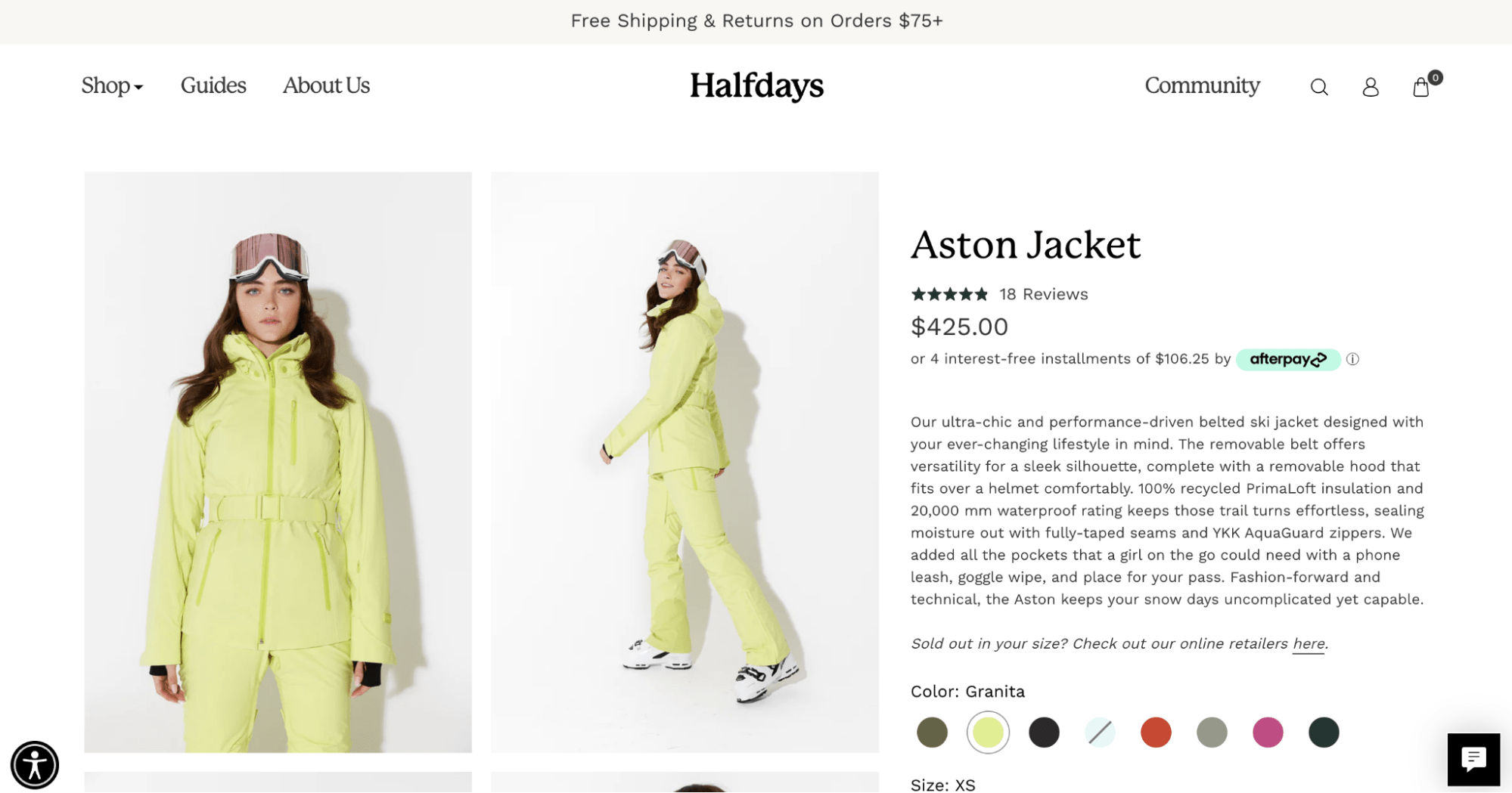How to Create Better Buyer Personas That Drive Conversions (+ Template)

To buyer persona or not to buyer persona.
While there are polarizing opinions on the value of buyer personas throughout the marketing world, there’s one thing we can all agree on: Identifying your target audience is essential to selling to them.

Buyer personas serve as your True North.
They help you keep customer wants and needs at the forefront rather than focusing purely on performance metrics (which are, of course, important!).
Without understanding who you’re selling to and what they want, it’ll be nearly impossible to get them to convert.
Today, you’ll learn what buyer personas are, why they’re important, how to create your own buyer personas (with a template), and much more.
Skip ahead:
- Buyer persona definition
- The importance of buyer personas for ecommerce brands
- How to create a buyer persona
- Ways to leverage your buyer personas today
What is a buyer persona?
A buyer persona—often referred to as a customer persona—is a fictional demographical profile on your (very real) ideal customer.
It includes basic (yet important) information like their age, location, education level, and income level, along with information like pain points/frustrations, factors that influence their buying decisions, motivations, and more.

Buyer personas allow you to understand your customers on a deeper level and help you craft online shopping experiences that resonate—and convert.
What are the key characteristics of a great buyer persona?
All buyer personas are not created equal. The more detailed, the more you have to work with to create better customer experiences.
Knowing the age, location, and gender of your customers is important, but there’s not much nuance to that, is there?
It’s only when you have a more in-depth understanding of your customers—through knowing their pain points and internal and external motivators—can you build ecommerce experiences that convert.
#cta-visual-pb#<cta-title>Build an ecommerce site that drives more conversions<cta-title>Try Shogun for free and start building out your perfect store to create a totally unique customer experience.Start building for free
At a baseline, your customer personas should include:
- Location: Where do you ideal customers live and what locations can you ignore?
- Age: How old are your ideal customers? Which ages can you exclude?
- Gender: Which genders make up your customer base?
- Interests: What do your customers enjoy outside of work? E.g., hiking, reading, discovering new restaurants, etc.
- Education: What is the highest level of education among your customers?
- Income: Where do your customers fall on the income spectrum?
- Job title: Do your customers have a diverse job titles or similar ones?
- Relationship status: Married, single, divorced, other?
- Language: What languages are spoken by your customers?
- Frustrations/pain points: What grinds your customers gears the most? E.g., being late, feeling inferior, etc.
- Motivations/goals: What inspires your customers to get out of bed every morning?
- Bonus: Personality traits and brands they’re likely to purchase from
As you uncover this information, you can identify areas of your marketing, sales, and customer support that could better serve your audience.
For example, if you learn your target customer is motivated by how a product makes them feel, you can incorporate that emotion into your site copy, product descriptions, and ads.
Why are buyer personas important for ecommerce brand success?
Customer personas help nearly every arm of a business make better decisions to improve the customer experience.
Pulling from a mix of psychology and product-fit, you can better understand how to market to customers and create the best possible experience.
Buyer personas help your ecommerce brand:
Fine-tune your ad targets
When you’re crystal clear on who your ideal customer is, your ad targeting becomes even more impactful.
With buyer personas, you can be sure you’re selecting the right targeting rather than making educated guesses about who you think is your customer.
For example, this ad from hair care brand BondiBoost is targeted to customers looking to stimulate hair growth and repair damaged hair:

Improve your brand’s copywriting and design
Knowing who your customers are means speaking their language—both in copy and in design.
For example, if your audience is primarily Gen Z, you can lean into language or norms that might resonate with that group.
Keep in mind, don’t over-do it with customer language.
Stick to your brand guidelines, and think of this more as an exercise in communicating your product(s) value to your audience.
For example, women’s outdoor apparel brand, Halfdays, knows their audience to a T—as shown in this product description:


Speaking to things their audience may be concerned with, like a place to put their ski pass, all the pockets needed for the girl-on-the-go, and more.
Insights like these inform content marketing efforts, like landing page and blog content. Knowing what frustrates your customers poses an opportunity to show how your product(s) offers a solution.
Clarify the marketing channels best suited to your brand
Trying to make every marketing channel work for the sake of being “everywhere” may be more of a hassle than it’s worth.
If your audience isn’t on Instagram…then investing hours and hours (and possibly a full-time hire?) into the channel doesn’t make sense.
But that’s only certain if you have your buyer personas mapped out.
You may discover your target audience hangs out on a channel you may not have considered before, and could skyrocket your sales.
#cta-visual-pb#<cta-title>A customized ecommerce site fit for your ideal customers<cta-title>Try Shogun for free and start building out your perfect store to create a totally unique customer experience for every buyer persona.Start building for free
How do you create a buyer persona? (+ template)
So, where do you begin on your customer persona journey?
Let’s take things step-by-step from the perspective of a fictional luxury coffee brand, Caffeinated, who sells high-quality coffee and at-home brewing accessories.
1. Analyze and define your current customers
You don’t need to look far to understand who your customers are—take a look at your current audience base and identify similarities, trends, differences, etc.
You may find you have several types of customers, rather than just one big group. Or, you have customers who purchase on behalf of someone else.
For example, the team at Caffeinated may uncover they have customers all over the world, or who only purchase products as gifts. Or maybe they find that the majority of their customers purchase every month or two.
Insights like these can help inform decisions around pricing—but more on that later!

Even you find that not every customer fits perfectly into just one persona as you go through this exercise, you’ll have a greater sense for who your audience is and what they care about.
In Caffeinated’s case, the team uncovers the following groups of customers just from analyzing their site analytics:
- Simple Sippers: Coffee drinkers who purchase at least one bag of coffee monthly. These folks use a french press or electric coffee maker. No fuss. No frills. Just coffee.
- Fancy Brewers: Coffee drinkers who take “at-home” barista-ing seriously. These folks have all the high-quality coffee and equipment to match—think scales, acrylic cups, organic coffee filters, you name it—and are always looking to add more to their home coffee shop.
2. Collect useful demographic data about your customers
Once you know who your customers are on a general level, it’s time to get granular.
Uncover demographic information like location, age, income, and interests to paint an even fuller picture of your target audience.

This information will help you build out your customer profiles into full-fledged buyer personas and help you identify opportunities to curate their experience with your brand.
How might you gather this information? Here are a few great ways to uncover demographic customer details:
- Social media analytics (paid and organic): Tools like Facebook Ads Insights and Instagram analytics are a great way to learn granular information about your customers
- Social listening: Sprout Social and Hubspot can help you understand what your customers are talking about, giving you a better understanding of their pain points, passions, and goals.
- Ecommerce site analytics: Tried and trusted Google Analytics, or your ecommerce analytics tool of choice, offers demographical insight (like location) along with how customers are shopping on your site (like device type and time on site).
- Feedback and surveys: Sending a post-purchase survey that asks for customer reviews helps you learn about their expectations, preferences, and opportunities to improve your products.
- Customer support: Your support team is a goldmine for understanding nuances about your customers. What are your support agents hearing from customers? What frustrations do they have? What do they love about your ecommerce experience?
💡Pro tip: You may not need to find out every small detail about your customers. Getting too granular will make it nearly impossible to group every customer. Be as detailed as you can without breaking customers up into too many groups.
This information is the core of what makes buyer personas so effective.
It will help you create valuable, desirable, and relatable marketing campaigns and may also influence decisions around products, your site design, and more.
So, in the case of Caffeinated, here’s how demographical information would build out their two customer groups:
Simple Sippers
- Ages: 25 – 32
- Location: Seattle, Portland, New York City
- Interests: Mountain biking, hiking, reading
- Pain points: Overpaying for low-quality coffee
- Preferred device to online shop: Mobile
Fancy Brewers
- Ages: 29 – 40
- Location: Seattle, Los Angeles, San Francisco
- Interests: Strolling through museums, picnics in the park, biking
- Pain points: Running out of their favorite single-origin coffee
- Preferred device to shop online: Mobile, tablet
3. Piece your buyer personas together
After you’ve collected demographical data and have a solid understanding of what drives your customers, you can put your personas to work.
You can use our free template to organize your buyer personas.
For our friends at Caffeinated, an example of a buyer persona for the “Simple Sippers” group might be:
Name: Patty the Simple Sipper Age: 36 Language: English Location: Toronto, Canada Income: $140,000 CAD Job: UX Designer Interests: Reading thrillers, running her freelance web design business, taking her dog camping Pain points: Running out of coffee, overpaying for bad coffee (but will pay more for high-quality coffee) Social channels: TikTok and Twitter Preferred communication channel: Email, not SMS
This may seem like a simple collection of customer data, but when built out in identifiable profiles, your team can make data-driven decisions that directly affect your bottom line.
Feel free to add or forgo any sections in this template to help craft your personas as you need them. You may find you have additional questions to ask customers as you build your personas.
You’re ready to create custom ecommerce experiences that provide true value to your customers, which brings us to our next point…
What you can do today with your buyer personas
Buyer personas complete ✅
Now, put your buyer personas to work. Here are a few ways the Caffeinated team can leverage this buyer persona:
- Prioritize implementing a coffee subscription service so customers like Patty wont ever run out of coffee again
- Focus on TikTok and Twitter (over other channels) and create valuable content that interests customers like Patty
- Emphasize Caffeinated’s coffee quality over bargain brands in emails and throughout the website to hit that luxury product messaging home
- Prioritize email marketing and support and reinspect the effectiveness of the brand’s SMS efforts
Think of your buyer personas as a compass for determining which business efforts or activities you should focus on, and which you should do away with completely.
Customer personas bring business clarity and result in better decisions
Without understanding who your customers are, it’ll be challenging to market to their needs and wants.
Having a clear grasp of your buyer personas improves nearly every aspect of your business—from choosing which marketing channels to invest in to understanding how customers want to communicate with you.
It’s likely your buyer personas will change, and that’s OK!
Be sure to revisit your personas once a quarter to ensure they’re accurate or if you need to develop a new one.
Just as you need to optimize your store pages regularly, updating your personas will ensure your marketing efforts aren’t wasted.
#cta-visual-pb#<cta-title>A customized ecommerce site fit for your ideal customers<cta-title>Try Shogun for free and start building out your perfect store to create a totally unique customer experience for every buyer persona.Start building for free

Kaitlyn Ambrose
Kaitlyn works on all things content at Shogun. ⚡



